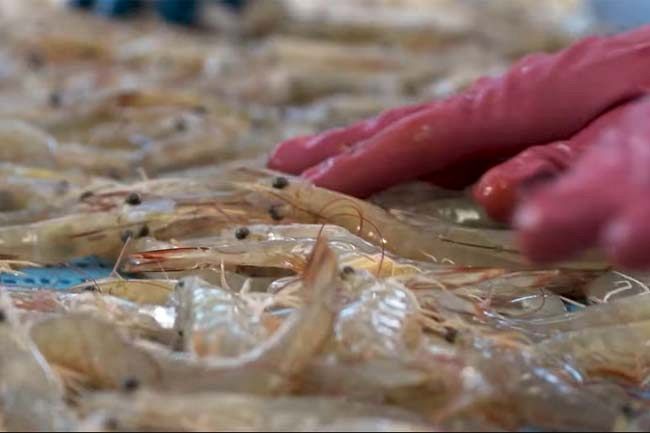The ongoing effects of El Niño are still felt by local fishermen, counting their losses as mangroves dry up and release tons of carbon into the atmosphere, writes Francis Annagu.
MANY PEOPLE are unaware of the significance of mangroves to our diminishing surroundings and how their loss over the last 50 years or more has affected us.
Mangroves are extremely valuable coastal ecosystems that offer a multitude of benefits, including protection against erosion and rising sea levels, animal shelters, nursery habitats, and food for marine life.
These benefits are significant to local populations on a broad scale and have both cultural and economic value.
During the summer of 2015–2016, the Gulf of Carpentaria in northern Australia experienced a 40-centimetre drop in coastal water due to excessive dry weather caused by a severe El Niño event, which caused some 40 million mangroves to shrivel up and die.
What had caused the mangroves to shrivel up was unknown at the time. Years of research by mangrove ecologist and senior research scientist Norman Duke of James Cook University revealed that mangrove trees “essentially died of thirst” due to abnormally low sea levels caused by intense El Niño events.
We have found that this is the worst mangrove tree death event in recorded history due to climate change. Mangroves covering more than 76 square kilometres perished, releasing about a million tons of carbon dioxide into the atmosphere.
The catastrophic devastation had enormous effects on natural coastal ecosystems, local and global fish supply chains, and the fisheries that depend on them.
Mangroves unlikely to return this time
According to Duke, mangroves could adjust, but not to such drastic alterations that happened so soon. It remained to be seen how they would fare in the upcoming years. Certain locations may entirely go from being dominated by mangroves to becoming salt pans, which are level, barren plains coated in salt and other minerals.
The intensity of localised storms such as tropical cyclones has increased, which is another factor. Cyclones have had amazing and devastating impacts. Dead mangrove lumber piles were swept up and hauled over tidal zones, crushing any newly formed trees and any survivors that came up.
Duke disclosed there has been virtually little monitoring of these very pure mangroves in locations where very few people dwell. Such a program was desperately needed.
Duke said:
“We need to be able to form a rapid assessment response for these emergent situations. These habitats are on the retreat. They’re vanishing significantly more rapidly than any of the threatened woods we have.”
Fishers losing out on profits
The alternating El Niño cycles that cause variations in rainfall are well-known to Australian fishermen. However, the effects on the marine environment in the north have only recently been better understood. What is less well-known are the effects of El Niño-driven sea level changes on fisheries, which can lead to changes in tides and currents.
Prawns are a common ingredient in Australian barbecues, and we are lucky to have wild-caught prawns from fisheries that are sustainably managed and employ best management practices.
You've likely heard of the white banana prawns and tigers that are captured in the Gulf of Carpentaria. However, a fishery in the isolated Joseph Bonaparte Gulf, west of Darwin, is concentrated on a different type of red-legged prawn, known as redleg banana prawns.
However, Duke stated:
“These mangroves are essential to the fishing industry, as they are home to fin fish, mud crabs and redleg banana prawns.”
Yet, the intricate life cycle of these tiny crustaceans, the high tides in their mating habitats, and the anticipated rise in frequency of intense El Niño events present difficulties for both them and their environments.
These mangroves support a $30 million fishing business including fin fish, mud crabs and redleg banana prawns. Redleg banana prawn fishermen reported their lowest-ever catches during the El Niño.
Although El Niños are a natural occurrence, scientists believe that climate change will cause them to occur more frequently and with greater severity. Furthermore, it can be more difficult to forecast these occurrences due to shifting weather patterns.
Researcher Dr Eva Plaganyi heard an intriguing tale from a local fisherman in 2015 while she was meeting with fishermen from the Northern Prawn Fishery, one of Australia's largest multi-species fisheries that spans from the Joseph Bonaparte Gulf and the Gulf of Carpentaria.
One of the fishermen said:
“We didn't catch many red-leg banana prawns — there's something odd going on.”
Dr Plaganyi said:
“The anomalies the fisher was seeing first-hand was part of the very large 2015–16 El Niño that affected so many of our fisheries around the coast at the Joseph Bonaparte Gulf and the north West of the Gulf of Carpentaria.”
Francis Annagu is a freelance data journalist with a special focus on environmental, political and social inequality topics.
Related Articles
- News Corp continues to endorse climate change nonsense
- Fossil fuel lobby steer COP28 climate deal towards global catastrophe
- Climate denial order of the day at COP28
- COP28: Where fossil fuel industries go to gloat
- As the planet burns, the insane chase the almighty dollar
 This work is licensed under a Creative Commons Attribution-NonCommercial-NoDerivs 3.0 Australia License
This work is licensed under a Creative Commons Attribution-NonCommercial-NoDerivs 3.0 Australia License
Support independent journalism Subscribe to IA.













